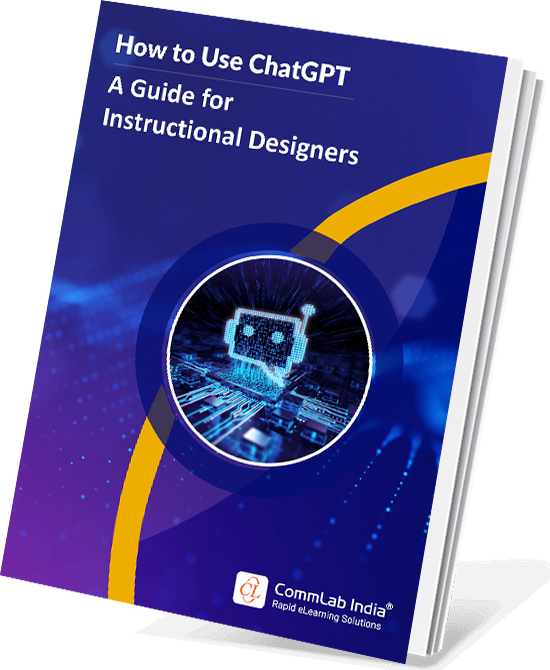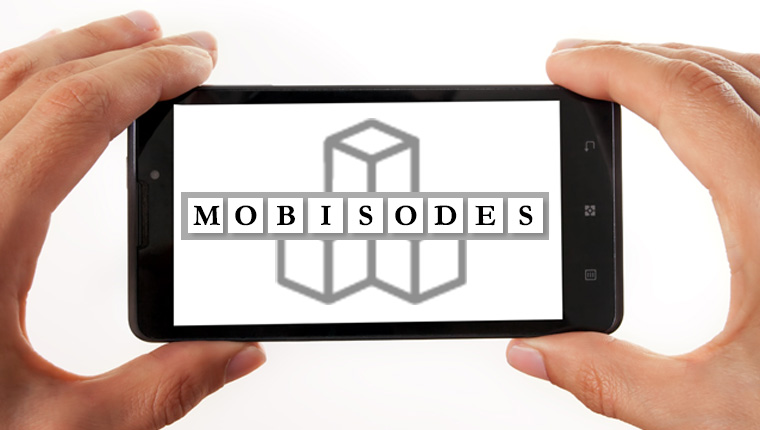What's Next in Corporate eLearning? AI, Avatars, 3D models, and More
The world of online learning is continually evolving. Technological advancements are reshaping the way we deliver and consume training and development content. From artificial intelligence (AI) and virtual avatars to 3D models and immersive technologies, eLearning is on the cusp of a major transformation. In this blog post, we will explore the cutting-edge trends shaping the future of eLearning.
→ Download Now: How to Use ChatGPT — A Guide for Instructional Designers [eBook]
Table of Contents
- How is Artificial Intelligence (AI) Transforming eLearning Development?
- What’s the Role of Avatars in Online Learning and Development?
- Why Harness 3D Models for Immersive Learning Solutions?
- What’s Next in eLearning for Corporate Training? Extended Reality (XR)
- What are Some Other Trends Shaping the Future of eLearning?
- How to Embrace the Future of eLearning?
What’s The Next Big Thing in eLearning?
Here are a few promising trends -
- Artificial Intelligence
- Avatars
- 3D Models
- XR - Extended Reality
How is Artificial Intelligence (AI) Transforming eLearning Development?
AI is rapidly infiltrating the eLearning design and development landscape, offering a wealth of possibilities to enhance the learning experience. Here are some keyways AI is transforming eLearning -
Personalized Learning Paths: AI algorithms can analyze a learner’s learning style, strengths, and weaknesses to create highly customized learning paths. This ensures that each learner receives content and instruction tailored to their individual needs.
Intelligent Tutoring Systems: AI-powered virtual tutors can provide on-demand support, answer questions, and offer real-time feedback. These tutors can adapt to a learner's pace and offer guidance around the clock.
Automated Content Generation: AI can be used in different forms of eLearning content development, such as quizzes, summaries, and practice questions. This frees up instructors' time and allows for the rapid creation of engaging learning materials.
Predictive Analytics: AI can track learner progress and identify potential areas where a learner may struggle. This allows trainers to intervene early with targeted support and prevent learners from falling behind. Here are a few types of predictive modeling -

What’s the Role of Avatars in Online Learning and Development?
Avatars, digital representations of learners and instructors, are becoming increasingly prominent in eLearning environments. They offer several benefits -
Enhanced Social Presence: Avatars can foster a sense of community and belonging in virtual learning environments. They allow learners to interact with each other and their instructors in a more personal way.
Simulation-Based Learning: Avatars can be used in role-playing scenarios and simulations, allowing learners to practice real-world skills in a safe and controlled environment. Such instructional design strategies are particularly useful in areas such as healthcare, customer service, and technical training.
Increased Engagement: Avatars can add an element of gamification and fun to the learning experience, making it more engaging and motivating for learners.
Accessibility: Avatars can be customized to represent diverse learners, promoting inclusivity and accessibility in the online learning space.

How to Use ChatGPT — A Guide for Instructional Designers
Create Immersive Learning Experiences by leveraging ChatGPT
- Frame Learning Objectives
- Generate Scenarios
- Design Assessments
- And More!
Why Harness 3D Models for Immersive Learning Solutions?
3D models are revolutionizing the way we visualize and interact with learning content. Their applications in eLearning are far-reaching:
Interactive Visualizations: 3D models allow learners to explore complex concepts and structures in a hands-on way. For example, medical faculty can dissect a virtual human body or the engineering department can examine intricate machinery.
Virtual Labs and Simulations: 3D models enable the creation of realistic virtual labs and simulations. This provides a safe and cost-effective way for learners to practice experiments, and procedures, and explore environments that would otherwise be inaccessible.
Gamification: 3D models can be integrated into learning games. Using gamification for eLearning design and development making them more interactive, engaging, and enjoyable.
Accessibility for Diverse Learners: 3D models are incredibly helpful for learners who process information visually, making learning more accessible.
What’s Next in eLearning for Corporate Training? Extended Reality (XR)
Extended reality (XR), which encompasses virtual reality (VR), augmented reality (AR), and mixed reality (MR), is poised to transform eLearning fundamentally.
Immersive Learning Experiences: VR can transport learners to virtual environments that simulate real-world scenarios. This is ideal for training in fields like emergency response, surgery, and aviation.
Situational Training: AR can overlay digital information onto the real world, providing learners with context-sensitive instructions and guidance. This has applications in technical maintenance, field service, and on-the-job training.
Collaboration and Interaction: MR blends the real and virtual worlds, enabling learners and instructors to collaborate and interact with digital objects in shared spaces. This fosters teamwork, problem-solving, and knowledge sharing.
What are Some Other Trends Shaping the Future of eLearning?
Beyond the core technologies discussed earlier, here are some additional trends influencing the trajectory of eLearning -
Microlearning: Microlearning strategy involves breaking down learning content into bite-sized, easily digestible modules. This format is ideal for busy learners and promotes better knowledge retention.

Mobile Learning: With the proliferation of smartphones and tablets, mobile learning is becoming essential. eLearning content needs to be optimized for mobile devices to ensure accessibility and convenience.
Social Learning: Social learning platforms encourage collaboration, peer-to-peer learning, and knowledge sharing. These platforms leverage the power of social networks to enhance the learning experience.
Data-Driven Decision Making: Learning analytics tools collect and analyze data on learner behavior and performance. This data provides valuable insights that can be used to optimize learning design, identify areas for improvement, and personalize the learning experience.
How to Embrace the Future of eLearning?
The future of custom eLearning is incredibly bright. The convergence of AI, avatars, 3D models, XR, and other cutting-edge technologies promises to create unprecedentedly personalized, immersive, and effective learning experiences. To successfully navigate this evolving landscape, trainers and organizations must:
Invest in technology: Stay up to date with the latest eLearning technologies and invest in the necessary infrastructure.
Foster a Culture of Innovation: Encourage experimentation and exploration of new technologies within training settings.
Collaborate with Technology Partners: Partner with technology providers and experts to develop and implement innovative eLearning solutions.
Focus on Learner-centricity: Keep the learners' needs and preferences at the forefront of all eLearning initiatives. Here is a short video to help you understand how you can design learner-centric eLearning.
Provide Training and Support: Offer training and support to trainers to help them effectively leverage new technologies in their teaching practices.
How to Create Learner-Centric Custom eLearning — Five Tips [VIDEO]
Wrapping Up!
The technologies transforming eLearning have the potential to revolutionize the way we learn. By embracing these advancements, we can create more engaging, accessible, and personalized learning experiences for all ages and backgrounds. The future of training is undoubtedly bright, and it's an exciting time to be a part of this ongoing transformation.
Ready to Revolutionize Your eLearning Content?
Dive into our comprehensive guide, “How to Use ChatGPT — A Guide for Instructional Designers,” and discover how AI can transform your instructional design process. Start enhancing your courses today!
Editor's note: This post was originally published in April 04, 2024 and has been updated for comprehensiveness.





